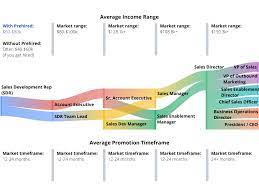The world of technology is constantly evolving, and new advances are being made every day. From artificial intelligence to virtual reality, there are many exciting new technologies that have the potential to revolutionize the way we live and work.
One of the most intriguing new technologies is the Internet of Things (IoT). This technology allows everyday objects to be connected to the internet and controlled remotely. For example, a person can control their home’s lights, thermostat, security system, and more from their smartphone or laptop. This technology has already been used in many industries such as healthcare, manufacturing, transportation, and retail.
Another exciting development is artificial intelligence (AI). AI enables machines to learn from data and make decisions with minimal human intervention. AI can be used for a variety of tasks such as facial recognition systems, autonomous vehicles, natural language processing applications, and more. Companies like Google and Amazon are already using AI to improve their products and services.
Augmented reality (AR) is another technology that has been gaining traction in recent years. AR combines real-world elements with virtual elements in order to create an enhanced experience for users. For example, AR can be used for interactive gaming experiences or for providing detailed information about products or services in a retail setting.
Finally, blockchain technology has been making waves in recent years as well. Blockchain is a distributed ledger system that allows users to securely store data without requiring a central authority or server. It has become popular due to its ability to provide secure transactions with reduced risk of fraud or manipulation. Blockchain technology has already been used in finance, healthcare, real estate, energy management systems, and more.
These are just some of the many exciting new technologies that have recently emerged onto the scene. With each passing day we are seeing more breakthroughs that will shape our future in unpredictable ways – it’s an exciting time for tech enthusiasts!
These are the top 9 questions about new technology.
- What new technology is available?
- How can I learn more about new technology?
- What are the benefits of using new technology?
- How does new technology work?
- What are the risks associated with new technology?
- What is the cost of using new technology?
- How secure is new technology?
- Are there any legal or privacy issues associated with using new technologies?
- Is it easy to use and understand new technologies?
What new technology is available?
- Augmented Reality (AR)
- Artificial Intelligence (AI)
- Autonomous Vehicles
- Blockchain Technology
- 3D Printing
- Internet of Things (IoT)
- Virtual Reality (VR)
- Robotics and Drones
- 5G Networking
- Quantum Computing
How can I learn more about new technology?
- Attend tech conferences and events.
- Follow tech blogs and websites.
- Read tech magazines and books.
- Take online courses or tutorials.
- Connect with other tech professionals on social media or in person.
- Follow industry leaders and influencers on Twitter, LinkedIn, and other social networks.
- Participate in hackathons, coding challenges, or other technology-focused competitions.
What are the benefits of using new technology?
- Increased Efficiency: New technology can help businesses automate tasks and processes, reducing the amount of time needed to complete a task. This can lead to increased productivity and cost savings.
- Improved Communication: New technology allows for faster communication between individuals and teams, allowing for better collaboration and quicker problem solving.
- Increased Security: New technology can help protect against cyber-attacks and other security threats, ensuring data is safe from unauthorized access.
- Greater Accessibility: New technology can make it easier for people with disabilities or limited mobility to access information or services that they may not have been able to before.
- Enhanced Customer Experience: New technology can help businesses provide a better customer experience by providing more personalized service or offering more convenience.
How does new technology work?
New technology works by using a combination of hardware, software, and services to create an integrated system that can do tasks that were not previously possible. The hardware component is the physical components such as computers, mobile phones, and other devices. The software component is the programs that run on these devices to perform tasks. The services component is the cloud-based services that provide data storage and other capabilities. All of these components work together to enable new technology to work.
What are the risks associated with new technology?
- Security Risks: New technology can open up systems to cyberattacks, data breaches, and other security risks.
- Privacy Risks: New technology can also increase the risk of data collection and misuse by companies or other entities.
- Costly Upgrades: Companies may need to upgrade their existing systems or purchase new ones in order to take advantage of new technology, which can be costly.
- Unforeseen Consequences: New technology can have unintended consequences that are difficult to anticipate before implementation.
- Job Losses: Automation and other forms of new technology can lead to job losses as machines replace human labor in some industries.
What is the cost of using new technology?
The cost of using new technology will vary depending on the type of technology and the specific application. Generally, the cost of new technology will include the price of purchasing or licensing the technology, any associated setup or installation costs, and ongoing maintenance and support fees.
How secure is new technology?
The security of any new technology depends on the implementation of security protocols and measures that are put in place to protect the data, systems, and networks associated with it. The security of new technology is largely dependent upon the security measures taken to protect it from malicious actors or cyber threats. Security measures may include encryption, authentication, authorization, access control, and other protocols that help protect data and systems from unauthorized access. Additionally, organizations should also consider implementing additional security measures such as regular patching and updating software to ensure that their systems are up-to-date with the latest security protocols.
Are there any legal or privacy issues associated with using new technologies?
Yes, there are a number of legal and privacy issues associated with using new technologies. These include data protection, intellectual property rights, cyber security, and consumer protection. In addition, new technologies may raise ethical issues related to the use of personal data and the potential for misuse of technology.
Is it easy to use and understand new technologies?
It depends on the technology. Some technologies are designed to be easy to use and understand, while others may require more effort to learn. In general, it is easier to use and understand new technologies if you have some prior knowledge or experience with similar technologies.




